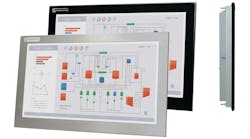Batch-size-of-one manufacturing and digitalization take center stage
Detroit is changing. It had to. It hasn’t monopolized American automotive production for almost a decade now. But it has slowly begun to crawl from the wreckage with a more diversified industrial community. The aerospace industry moved in quickly to take advantage of the engineers left behind as automakers migrated south. But now the food and beverage industry has gained a strong foothold in the Motor City.
Nowhere was that more evident than at the 11th annual Manufacturing in America Summit, which returned to Detroit’s Ford Field and was attended by more than 3,000 individuals. The event, which is hosted by Siemens and Electro-Matic Products, provided 100 technical learning seminars. Raj Batra, president, Digital Factory, Siemens, kicked things off with an assessment of the manufacturing environment. “Optimism is extremely high right now,” he said. “It’s the highest level recorded in 20 years, according to the National Association of Manufacturers Outlook Survey, which indicated almost 70% of their membership said they’d increase their capital expenditures.”
ExxonMobil is investing $35 billion in the United States on top of the $15 billion it had already announced. Boeing is investing $100 million for the workplace of the future in the United States; Anheuser-Busch InBev has planned $2 billion in U.S. plants to be invested; Fiat Chrysler is spending $1 billion on Warren, Michigan, plant that will create 2,500 new jobs; BMW is making a $600 million investment in its Spartanburg, South Carolina, plant, which is estimated to create 1,000 new jobs; and Apple’s $30 billion in U.S. investment will mean 20,000 new jobs, explained Batra.
“New plants, new expansions and modernization,” said Batra. “These investments are not brownfield tying onto legacy. These are state-of-the-art investments. This is going to drive growth, innovation and high-tech, high-quality jobs. When we talk about digitalization, you can see it in all varieties in a very scalable way.” It doesn’t have to be a large multinational company.
“Manufacturing is really hungry for talent,” explained Batra. “The top concerns are dealing with the skills gap and the talent shortage. We have millions of people who are eligible for retirement—digital migrants—in the next decade. Finding skilled talent to replace them is a top concern.”
Transferring that tribal knowledge won’t be easy. “Generations will collide as we bring new people in,” said Batra. “To have an effective organization, we need to foster a culture where generations and communication styles work together.”
According to a joint survey from MIT Sloan Management Review and Deloitte, about 80% of the population wants to work for a digitally enabled company. And consumer trends—individualization; automotive-industry changes; demands for fresh, organic and local; and people wanting their custom purchases now—are affecting manufacturing.
“What’s changing in manufacturing now is mass customization,” explained Batra. “It will play an incredibly important role in how organizations transform. All of these things will play a disruptive role, unless they’re embraced. Going digital isn’t just for startups. Digital natives are growing fast, but incumbents embracing digital are pulling away from the pack.”
When you look holistically over the past 10 years and the huge investments in automation and software, there have been huge efficiency gains and engineering reductions to market, said Batra. Customized production at Adidas’ robot-powered SpeedFactory will make 300 million pairs of shoes a year. “People want new styles, and they want them right away,” he explained. “After a year, no one wants that version any more. Kids want the shoe customized. Adidas embraced the holistic digital model.” By creating a digital twin of the shoe, Adidas is going to put that shoe out in a couple of days, rather than the 18-month cycle it took previously.
Detroit hasn’t shortened its recovery time by quite so much, but it’s certainly gaining ground.






